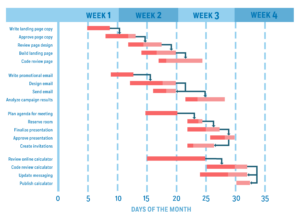As a freelance project manager, many of the projects that come my way are troubled projects. They run the whole gamut: from projects that only require a straightforward readjustment in scope to complex projects that require protracted negotiations on scope, time, costs and constraints.
Interestingly, it is not easy to arrive at generalities or ‘rules of thumb’ to get a troubled project back on track. Each one has to be studied. I have seen very large projects which at first look to be in an insurmountable amount of trouble get back on track fairly easily. For example, after both the clients and the performers agree to change the technical approach, or maybe by re-prioritizing some scope elements.
At the other end, I have seen small projects remain troubled due to the complete inability of important decision-makers to move from their position. Even in the face of evidence that, as structured, that project cannot be successful anymore. The decision-maker perceives –perhaps correctly so- that there would be dire consequences (political, monetary) in admitting the current project will not be successful.
When the troubled project continues under an original design which is no longer viable, project teams must plow ahead and try to muscle through the implementation under very difficult conditions. Personnel will work long hours and be stressed the majority of the time. Some of them will leave the project. You can be sure the staff with the best skill set will be the first to leave, not the weak performers.
Clients will probably micro-manage and be demanding, especially since they harbor serious doubts about project outcome. The sad part is that continuing under these conditions very often results in a much more costly project –in monetary and human terms- than if we had had the courage to stop the project; renegotiate new scope/ time /cost; and restore the project to good standing. If you don’t see how to get the project back on track, it may be time to re-size it. It may cost you less in the end.
—————————
For more resources, see the Library topic Project Management.
—————————
 Sections of this topic
Sections of this topic













